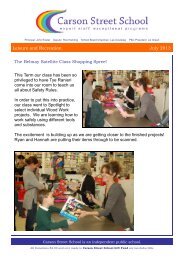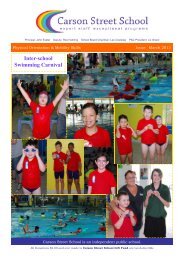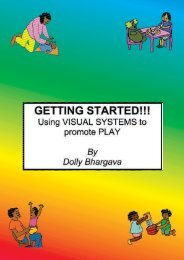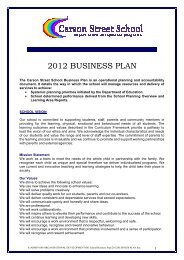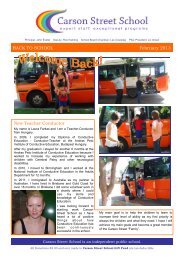Getting Started: Using Visual Systems to Promote Communication
Getting Started: Using Visual Systems to Promote Communication
Getting Started: Using Visual Systems to Promote Communication
Create successful ePaper yourself
Turn your PDF publications into a flip-book with our unique Google optimized e-Paper software.
25<br />
Topic 11 – <strong>Visual</strong> System a) First/Then<br />
A ‘First-Then’ visual system informs the child about the sequence of events they are<br />
expected <strong>to</strong> participate in i.e. first you …and then you... It assists the child<br />
transition from one activity <strong>to</strong> another as they know what they will be doing next. It<br />
can also motivate the child <strong>to</strong> complete a non-preferred task especially if it is<br />
followed by a preferred activity. The items in the first/then system can be<br />
represented as object symbols /pho<strong>to</strong>s/computer line drawings as appropriate.<br />
Example of a First/Then <strong>Visual</strong> System<br />
Stephanie is a 5 year old girl with a Global Developmental Delay and a Hearing Impairment. She uses hearing aids.<br />
She relies a lot on signs, visual cues such as objects, computer line drawings and pho<strong>to</strong>s, body language, and facial<br />
expressions <strong>to</strong> understand her environment. At home her parents use the first/then system <strong>to</strong> help her understand<br />
her routine.<br />
Movable green<br />
arrow that<br />
highlights what<br />
activity the child<br />
is engaging in<br />
FIRST<br />
Play outside<br />
THEN<br />
Dinner<br />
The use of<br />
different colours<br />
further highlights<br />
the difference<br />
between ‘first’<br />
and ‘then’<br />
Example of a First/Then <strong>Visual</strong> System<br />
Stephanie was reluctant <strong>to</strong> try any activity which was not of her choosing. To encourage Stephanie <strong>to</strong> participate in<br />
an activity for example, making a puzzle - a gradual approach was utilized. In other words put one puzzle piece on<br />
the puzzle board and then get a break i.e. ‘first you put one puzzle piece on, then you get a break. Gradually, the<br />
expectations were built i.e. two…three…four…five puzzle pieces and then a break.<br />
Movable green<br />
arrow that<br />
highlights what<br />
activity the child is<br />
engaging in<br />
FIRST<br />
One puzzle<br />
piece<br />
THEN<br />
break<br />
The use of<br />
different colours<br />
further highlights<br />
the difference<br />
between ‘first’<br />
and ‘then’



